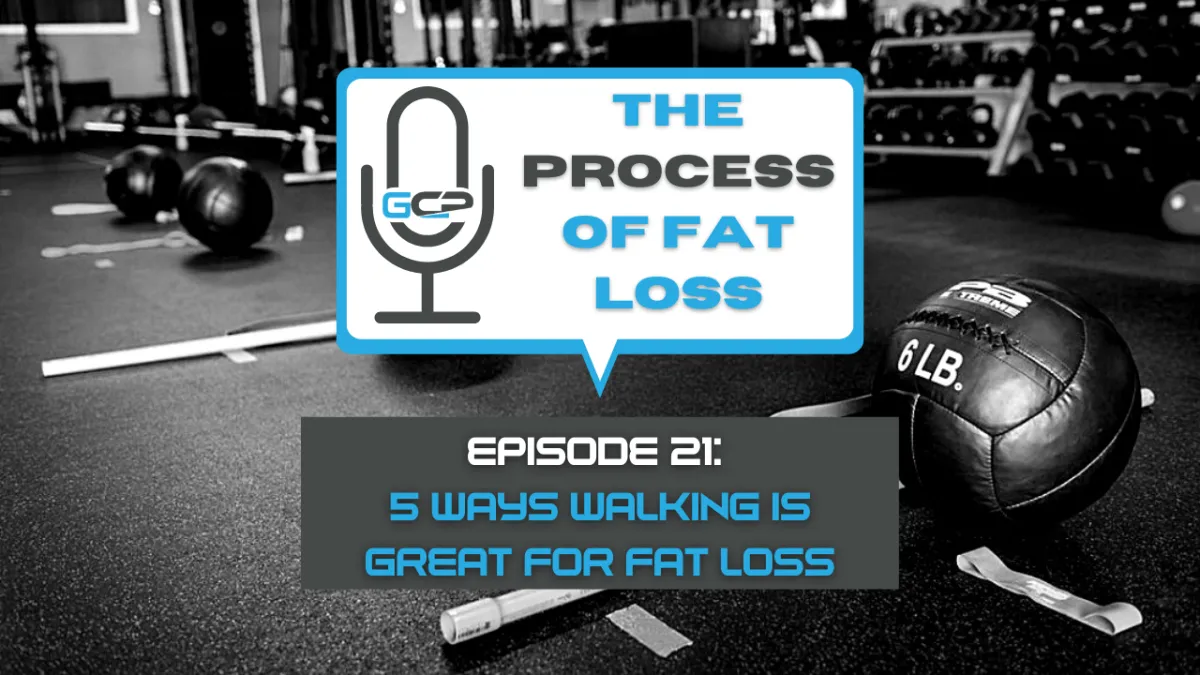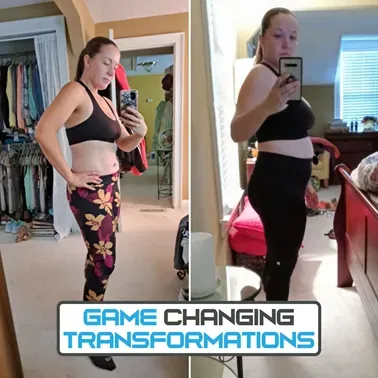FITNESS AND WEIGHT LOSS BLOG

5 Ways Walking is Great For Fat Loss
If I told you walking is a great tool for fat loss, what would be your initial reaction? My guess is you’d probably say it’s not intense enough, I won’t burn enough calories, or might think it’s only for really obese people. Well, today I’m going to explain why we recommend it for all our fat loss clients and even clients who are trying to maintain their current weight.
LOW IMPACT
The #1 reason why we recommend walking as a tool for weight loss is because it’s a low-impact exercise. We already recommend you do strength training 3 days a week which is a higher-impact training routine, so having other low-impact days is very beneficial. Low-impact movements reduce inflammation from exercise and have lower injury risks. No matter the age these are important but become even more important for fat loss as we age. With high inflammation, our joints hurt more, and possibly other body parts as well. Which can make doing more exercise tougher and less enjoyable. With walking, you can do it 7 days a week with little repercussions from it.
Higher impact movements such as running, jumping, lifting too often or sports can have an injury risk to them. That risk is totally worth it if your goal is to be good at those sports or skills but if your main goal is fat loss then the possibility of getting injured isn’t worth the risk. The setback of time you would have away from working on fat loss could derail your goals and progress.
EXCESS CALORIE BURN
The amount of calorie burn from walking is where most people ignore it as a good exercise tool. Compared to running, swimming, biking, etc it doesn’t burn as many calories. That is 100% true. But the part that people discount is the ability to do it 7 days a week, 365 days a year. When we discuss the low-impact part from before, you know that most exercises will be tough to do every day because of the long-term impact on the body. Swimming and possibly biking could probably be done as often as walking and if you have access to a 7-day-a-week pool or love to bike those are great alternatives. With biking, just be very cautious if you have low back issues as it will continue to make those worse as your hips lock up even tighter. But walking allows you to put in the volume of work without over-exerting.
LOWER CORTISOL LEVELS
Lower cortisol levels come with the lower impact idea. If you put less stress on the body it won’t increase its stress hormone cortisol. High cortisol can increase appetite and shift the metabolism into storing more fat. Higher stress levels can also impact the mind. The more physically stressful an activity is, the more mental stress it can have. Now you have to talk yourself into a hard workout, into the grind of the training. This is great a couple of days a week but hard to do 6 or 7 days a week. Walking can give you that stress reliever from a hard workout and it’s a great time to just think which is always good for reducing stress.
GOOD FOR MAINTENANCE
Once you reach your fat loss goal, should you stop walking and do more intense activities? For the most part, no. However, there is a caveat to this. If you want to now play a sport or do a more intense hobby because you have more energy and you move better, then most likely you can handle a more ramped-up intensity level. I still think you have to be cautious about how much intensity you have. I would recommend no more than five days, that way your body has time to recover and walk on your non-intense days to get the blood flow moving but keep the intensity down.
HOW TO INCORPORATE MORE INTO YOUR LIFE
Walk your dog
Walk at lunch or break times
You don’t have to walk for 30 minutes at a time, 10 minute chunks 3 times a day is still great
Walk with friends or family as a way to connect after a long day
Walk and listen to a book or podcasts
What is your main point that people can take away from our discussion today?
ACTION STEPS
Don’t overlook walking, just because it’s not super intense doesn’t mean it can’t add value
It’s more about the consistency and the ability to do it 7 days a week is why walking is so valuable compared to many other activities
START YOUR TRANSFORMATION TODAY

Ready To Jumpstart Your Journey Today?
Click The Button Below To Learn More!


